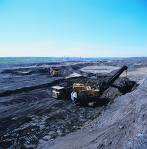Why are these people?:
News Releases
04.29.2009
Enbridge Inc. Announces Change to Webcast Start Time for 2009 First Quarter Financial Results
Enbridge’s Hybrid Fuel Cell Power Plant Featured on Daily Planet and a Finalist in Green Toronto Awards
News Release (PDF – 69.0KB)
04.08.2009
Joint energy industry carbon dioxide storage project achieves key milestone
04.03.2009
Enbridge Ontario Wind Power Turns on Green Energy in Kincardine
04.02.2009
CCS proposals offer significant emission reductions
04.01.2009
Enbridge Announces plans to hold Open Season for proposed LaCrosse Pipeline
:}
Doing this?
http://www.canada.com/edmontonjournal/story.html?id=70fd4398-81ff-4f17-8ad4-d81e1abe8a46
Oilsands damage is ignored
In a province running out of conventional oil and gas, Alberta’s oilsands are seen as a lifeline that will guarantee the continuation of our comfortable energy-driven society.
In a province running out of conventional oil and gas, Alberta’s oilsands are seen as a lifeline that will guarantee the continuation of our comfortable energy-driven society.
Too much of the time, people in this province don’t think about the cost of this gigantic oilsands development. It’s easy to do: most Albertans don’t live in, and rarely visit, the northern one-fifth of the province where the oilsands lie. What we don’t personally see or smell or taste, we tend to ignore.
The four-day series on the environmental impact of the oilsands boom written by Journal environment reporter Hanneke Brooymans, which started on Friday, is a valuable corrective to our neglect.
http://www.treehugger.com/files/2005/12/canadian_oil_at.php
Canadian Oil: At What Price?
by Michael Graham Richard, Gatineau, Canada  on 12. 9.05
on 12. 9.05
Most of you are already aware of the damage caused by the burning and the extraction of oil (like the apprehended damage caused by extraction in the Arctic Wildlife Refuge, for example). But what about the famous Canadian tar sands? After only two years of digging for bitumen near Fort McMurray in Alberta, Shell has already dug up a pit that is as much as three miles wide and 200 feet deep. 400-ton trucks, said to be the largest in the world, are used to move around all that dirt, and it takes a lot of it since on average 2 tons of tar sand are required to make 1 barrel of oil.
http://www.gmanews.tv/story/155046/Oil-sands-company-now-says-1606-ducks-diedhttp://www.responsibleminer.com/234/canadian-oil-sands-declared-more-environment-damage.html
Oil sands company now says 1,606 ducks died
04/01/2009 | 06:49 AMEDMONTON, Alberta — A Canadian oil sands company says more than three times as many ducks died last spring on a northern Alberta toxic waste pond than the 500 birds originally estimated.
Syncrude Canada chief executive Tom Katinas said Tuesday the carcasses of 1,606 ducks were collected from the toxic oily waters. The ponds contain waste from the process of separating oil from sand.
Katinas released the updated figure a week after an Alberta court granted the consortium three more months to enter a plea on federal and provincial wildlife charges. – AP
:}
Don’t Believe go look for yourself:
http://maps.google.com/maps?hl=en&q=canadian%20oil%20sands&gbv=2&ie=UTF-8&sa=N&tab=il
:}
Why should we in Illinois care?
Officials lobby for oil pipeline; project might start in early summer
Environmental groups oppose last phase of Canadian-U.S. energy company’s plan
GateHouse News Service
SPRINGFIELD —
Construction of a major underground oil pipeline along the eastern edge of Sangamon County could begin as early as this summer.
An energy developer and the Canadian consul general from Chicago are in Springfield this week to seek support for the endeavor as a major boost for jobs and energy security, including a meeting scheduled today with Gov. Pat Quinn.
The first section of the nearly 3-year-old, $350 million construction project has been completed to an area about 50 miles northeast of Peoria.
But the final phase has run into opposition from environmental groups and some landowners, who say the pipeline would only encourage continued reliance on polluting petroleum products and would violate property rights.
“Canada has the second-largest reserves in the world. There’s 170 billion barrels of reserves, and 97 percent are in the oil sands,” said Don Thompson, president of The Oil Sands Developers Group.
:}



